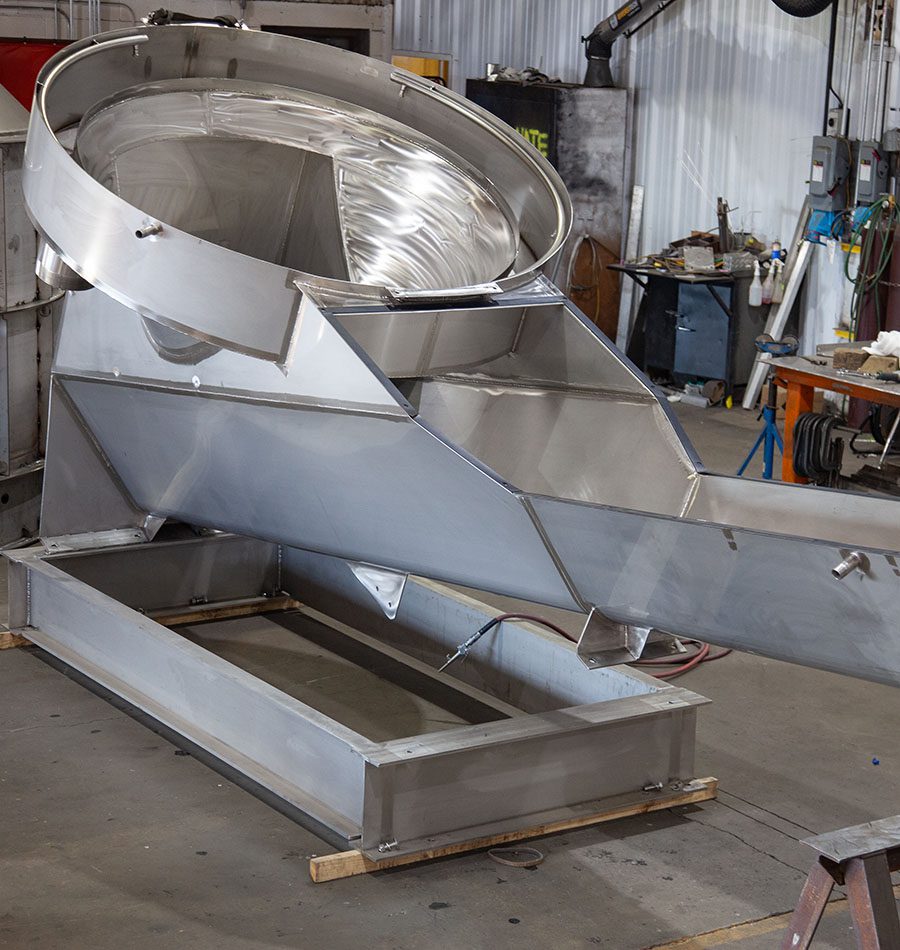Ingenious Patterns in Steel Manufacture: Enhancing Durability and Accuracy
In the realm of steel manufacture, the pursuit of resilience and accuracy has resulted in a wave of innovative trends that are reshaping the industry. From improvements in welding modern technologies to the assimilation of robot automation in construction processes, the landscape of steel production is progressing quickly. High-strength alloy growth, coupled with the use of 3D modeling and simulation software program, is pressing the boundaries of what is attainable in regards to architectural stability and accuracy. The growing focus on lasting practices in steel production is not only driving efficiency however likewise promoting a more environmentally aware strategy to manufacture. These patterns are not simply forming the existing yet likewise laying the groundwork for the future of steel fabrication, promising more improvements in sturdiness and accuracy.
Advanced Welding Technologies
In the world of steel construction, the fostering of innovative welding technologies has actually significantly reinvented the industry's technique to achieving remarkable quality and accuracy in architectural welds. Advanced welding innovations, such as laser light beam welding and friction stir welding, have actually emerged as game-changers in the area. By leveraging these innovative welding techniques, steel makers can elevate the toughness, strength, and accuracy of their structural welds, satisfying the significantly demanding demands of modern-day construction tasks.
Robot Automation in Construction
Embracing robot automation has actually become a foundation of contemporary steel construction methods, simplifying processes and enhancing effectiveness throughout the sector. Robotics are transforming the method steel elements are made, supplying exceptional accuracy and rate while minimizing human mistake. These automated systems can take care of repetitive tasks with consistent accuracy, resulting in higher high quality output.
One secret advantage of robotic automation in steel construction is the capability to work around the clock without tiredness, considerably boosting production outcome. This constant operation minimizes downtime and speeds up job timelines, eventually saving expenses for producers. Additionally, robots can be programmed to execute detailed jobs that may be hazardous or challenging for human employees, enhancing security in the workplace.
Furthermore, robot automation makes it possible for seamless combination with various other digital innovations, such as computer-aided layout (CAD) software program and Internet of Things (IoT) systems (metal fabrication melbourne). This interconnected method improves interaction in between different stages of construction, maximizing operations and ensuring real-time tracking and control. As the steel construction sector proceeds to evolve, robotic automation stands apart as a transformative force driving performance and precision in making processes

High-Strength Alloy Growth
The innovation of high-strength alloy growth in steel manufacture is improving the sector's strategy to boosting product longevity and efficiency. High-strength alloys are crafted to exhibit exceptional mechanical homes, such as boosted tensile stamina, strength, and corrosion resistance compared to traditional steel qualities. By including these sophisticated alloys into fabrication procedures, suppliers can create elements that endure higher stress and anxiety degrees and severe environments, leading to even more long lasting and reputable output.
One secret benefit of high-strength alloy growth is the capability to decrease product density without compromising architectural honesty. This not just leads to lighter-weight components yet likewise adds to set you back savings and enhanced efficiency in construction and assembly procedures. Furthermore, the boosted strength-to-weight ratio of these alloys allows for the style and construction of frameworks with higher load-bearing capabilities while minimizing total weight.
3D Modeling and Simulation Software Application
Improvements in steel construction processes have actually been dramatically driven by the combination of cutting-edge 3D modeling and simulation software program devices. These tools allow makers to produce comprehensive online models of their projects, enabling them to envision the final item with accuracy before any kind of physical work begins.

Sustainable Practices in Steel Manufacturing
Incorporating lasting practices into steel manufacturing processes is crucial for reducing ecological influence and making certain lasting source schedule. One key lasting practice is the fostering of energy-efficient technologies to decrease greenhouse gas exhausts during the steel production process. This includes making use of renewable power sources, such as solar or wind power, to power steel plants and implementing energy-efficient equipment to optimize energy usage.
One more vital facet of lasting steel manufacturing is the liable sourcing of basic materials. This entails ensuring that the iron ore and various other sources made use of in steelmaking are gotten from moral and eco-friendly sources. By promoting transparency in the supply chain and adhering to stringent ecological criteria, steel manufacturers can minimize the negative impacts of source removal on local ecosystems and communities.

Verdict
Finally, the innovative trends in steel manufacture such as innovative welding innovations, robotic automation, high-strength alloy advancement, 3D modeling and simulation software, and lasting practices are boosting the sturdiness and precision of steel items. These improvements are transforming the steel fabrication sector by enhancing quality, sustainability, and performance. It is clear that the future of steel fabrication hinges on welcoming these sophisticated innovations to meet the needs of contemporary construction and production industries.
In the world of steel fabrication, the quest of durability and accuracy has actually led to a wave of innovative patterns that are improving the industry.In the realm of steel manufacture, the adoption of innovative welding modern technologies has substantially revolutionized the market's strategy to achieving exceptional top quality and accuracy in structural welds. As the steel fabrication industry continues to progress, robot automation stands out as a transformative pressure driving efficiency and precision in producing procedures.
Furthermore, recycling and reusing steel scrap and waste materials play a significant role in enhancing the sustainability of steel production. Alpha reo.In conclusion, the innovative trends in steel construction such as sophisticated welding innovations, robot automation, high-strength alloy growth, 3D modeling and simulation software program, and lasting methods are improving the durability and accuracy of steel items